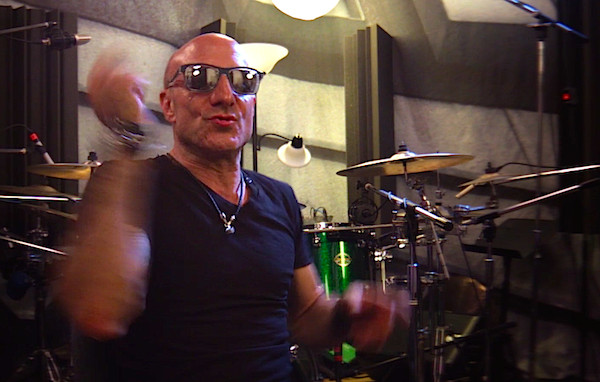Kenny Aronoff, renowned drummer and featured in the documentary Hired Gun, revisits the creation of one of his most celebrated tracks: the drum part for John Cougar Mellencamp’s timeless hit, “Jack & Diane”. The journey of transforming a John Cougar song from a simple acoustic demo to a chart-topping anthem was a meticulous process, heavily reliant on innovative drumming and collaborative arrangement.
John Cougar’s songwriting process typically began with him presenting a song to the band either on acoustic guitar or via a cassette recording. The onus was then on Aronoff to sculpt a drum beat that was not just rhythmically sound, but also imbued with a unique character that would elevate the song. Crucially, Cougar envisioned the drum parts themselves as hooks, integral to the song’s catchiness and radio appeal, a feature evident in many of their collaborations. The collective goal was to refine these raw songs into compelling tracks that would capture listeners’ attention and ensure repeated plays, aiming for that coveted number-one hit status.
The initial rendition of “Jack & Diane” hinted at hit potential, yet lacked a distinctive element. Aronoff’s first approach involved a straightforward beat: accented eighth notes on the hi-hat, a cross-stick on beats 2 and 4 (later evolving into a solid backbeat), and bass drum hits on 1, the “ah” of 1, and the “&” of 2. While this initial groove suited the intro, verse, and chorus, it lacked the dynamism needed to sustain the entire song. The band recognized the necessity for further development to maintain listener engagement throughout the track.
 Kenny Aronoff
Kenny Aronoff
The band’s experience in rehearsals taught them a crucial lesson: any flaw in the rehearsal room would magnify in the recording studio. This realization pushed them to innovate and refine their parts for “Jack & Diane,” knowing that only exceptional arrangements would make the cut for the album.
Recording for American Fool took place at Criteria Studios in Miami, coincidentally at the same time as the Bee Gees were working in an adjacent studio. Aronoff recalls hearing the Bee Gees experimenting with programmed drum grooves, a stark contrast to rock and roll. Intriguingly, their producer, Don Gehman, introduced a Linn 1 drum machine into their session, the same technology the Bee Gees were exploring. Aronoff initially resisted the idea of a drum machine, fearing it would supplant live drums. However, John Cougar’s priority was clear: achieving a hit single, regardless of the instrumentation.
Embracing the challenge, Aronoff quickly familiarized himself with the Linn 1, programming the drum beat he had developed on his acoustic kit. He creatively used the machine’s sounds, substituting the floor tom for the kick drum and the tambourine for the hi-hat. Handclaps replaced the snare backbeats. Each sound from the Linn 1 was routed to a separate track on the 24-track tape, allowing for nuanced mixing and control.
Following the drum machine programming, Cougar proposed a drum solo after the second chorus. Aronoff’s initial reaction was skeptical – a drum solo in a ballad seemed unconventional. The band dedicated an entire day to achieving the right drum sound in the studio’s large room, a departure from the typical practice of using smaller rooms for a controlled sound. Cougar sought a massive drum sound, inspired by Phil Collins’ iconic drum sound in “In the Air Tonight,” which was unconventional for radio hits at the time.
For the drum solo entrance, Aronoff opted for simplicity and impact, playing on the “&” of 4 on the kick and snare. This immediately garnered approval from the control room. However, Cougar remained critical. During discussions in the control room, suggestions became more confusing than helpful. Aronoff felt the pressure; failure to deliver could mean being replaced.
In the brief walk back to his drum kit, inspiration struck. He conceived the idea of mirroring his original rhythmic pattern but starting on the “&” of 1 instead of beat 1, creating a syncopated feel. He then broke from convention by ascending the toms instead of descending. This innovative approach, culminating in a cymbal crash prompted by Cougar, followed by a Phil Collins-esque drum fill cascading down the toms and a quarter-note triplet on snare, rack tom, and floor tom, formed the distinctive drum solo. Cougar was finally satisfied.
 Kenny Aronoff
Kenny Aronoff
Returning to the song’s groove, Aronoff infused power into his playing, incorporating sixteenth notes on the hi-hat. On beat 4, he executed a simultaneous hit on the snare and floor tom, creating an explosive sound, an idea inspired by Steve Gadd’s Mozambique beat on a Chick Corea record. A debate with Cougar ensued regarding the hi-hat pattern, eventually settling on sixteenth notes on beats 3 “e” “&” “ah,” building from soft to loud, intensifying the impact into beat 4. Mick Ronson, David Bowie’s guitarist, who was present during a week of studio sessions, suggested the a cappella chorus over Aronoff’s drum groove, a defining element of the song.
“Jack & Diane” not only reached number one but propelled the album American Fool to the top spot as well. Thirty-five years later, the song remains a radio staple. For Kenny Aronoff, this track was a pivotal moment, his “big break,” launching his illustrious career. The album’s success, marked by two Grammy awards and multi-platinum sales, cemented the song’s place in music history and highlighted Aronoff’s crucial contribution to its iconic sound.

